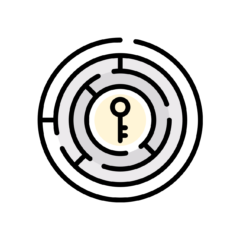I’m working intensively with a senior resume client. One of the items I have promised her is a template for cover letters. I’ve touched on them before, but it is one of the questions that seems to be of major interest to a lot of people.
Even more than your resume, a cover letter should be individualized per each job/title. However, as a recruiter that looks at literally hundreds of resumes per week, I can tell you that the chances I’m going to be interested in reading a cover letter are slim with a very few specific exceptions (I will cover those examples later.)
BR />
Here are some over-arching guidelines for constructing a cover letter for an open position.
1) The more detailed the information on the job description, the more targeted and detailed your cover letter should be. You should hit the *defined* points with specific examples from your work history most closely aligned with the points of definition. When I say specific, I generally mean a description of a project or initiative you worked on that may be hinted at on your resume but not spelled out. It is the same principle as behavioral-based interviewing, only tying it to their requirements in writing. If they have several points, choose one or two that you have the strongest case to build on.
2) Your first paragraph should include what job you are referencing and where you heard about it. Especially in the case of recruiters, we track sources for metrics, and it is very helpful to reference where you found the information. For example, my client was contacted directly by one of the VP’s of a company she is interested in, about a general cultural fit with the company (as opposed to a specific position). If the cover letter that goes to recruiting, they will know that the VP was interested in her background and that he has an interest in her profile, rather than her pursuing his attentions. In that case, the recruiter/HR rep will actually give it a higher priority and be more proactive. In the case of an opportunistic (undefined role or future opportunity that hasn’t been published yet) it’s fine to just reference being a cultural and functional fit, as I did with that particular cover letter.
3) You should have no more than 3-4 paragraphs. The length of each paragraph is going to be defined by a couple of things.
A) the length of the job description
B >B) the detail in the JD
BR />If you are applying to an advertised job, say on LinkedIn or the corporate career site with no real "person" you are forming a relationship with, your cover letter should be very short and only used if the JD requests one. (The truth is that most recruiters don’t read them if they are coming in via some sort of external posting. It’s an annoyance and they want to get to the meat of the professional experience the candidate brings to the table.) If you are supplying a cover letter for a neutral (ie no personal contact) job, after you identify the what/where-how in paragraph one, then the second and third paragraph should use the examples in point 1, and each paragraph should be no more than 3-5 sentences.
4) Your final paragraph should be short, sweet and to he point, reiterating your interest and excitement about the position. I recommend taking a proactive assumption that you will be getting the job in most instances. I also include general availability (time zone, days/times most convenient) and best contact method/s. (Alternatively, include your email address/phone number under your closing.)
5) Closing should be professional or if it is an employee referral from someone you know, say thank you again for forwarding the opportunity, as that will reiterate your relationship with the employee. Employee Referrals are the single best way into any company and are most effective if it is someone you have worked with in some capacity in the past.
B >
